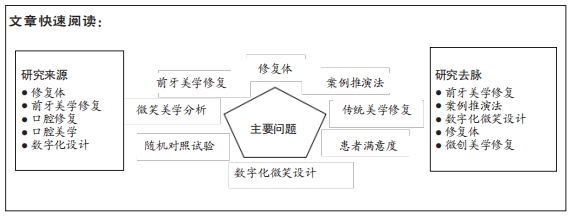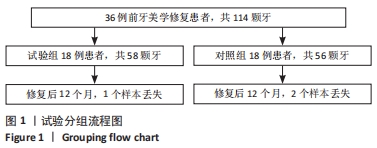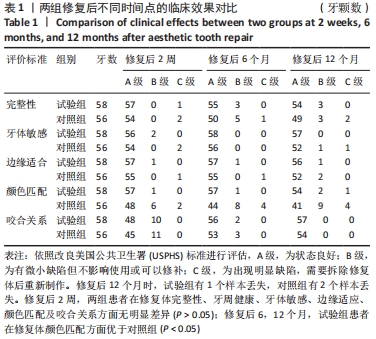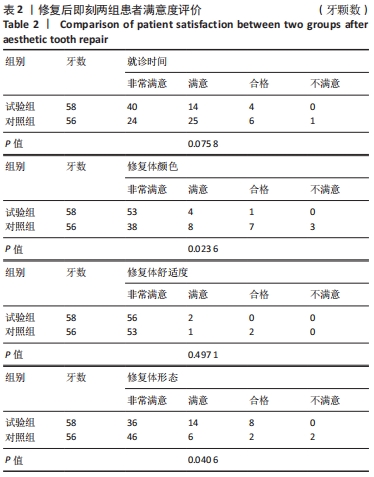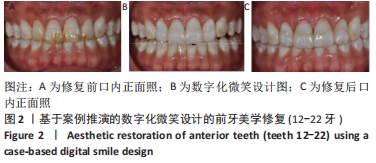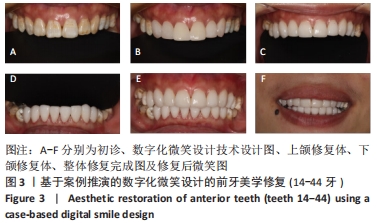[1] ZANARDI PR, LAIA ROCHA ZANARDI R, CHAIB STEGUN R, et al. The Use of the Digital Smile Design Concept as an Auxiliary Tool in Aesthetic Rehabilitation: A Case Report. Open Dent J. 2016;10:28-34.
[2] MEEREIS CT, DE SOUZA GB, ALBINO LG, et al. Digital Smile Design for Computer-assisted Esthetic Rehabilitation: Two-year Follow-up. Oper Dent. 2016;41(1):E13-E22.
[3] COACHMAN C, CALAMITA M. Digital smile design: A tool for treatment planning and communication in esthetic dentistry. Quintessence Dent Technol. 2012;35:103-109.
[4] 吴璇,曲汶利,孙赢.ezDSD软件在前牙美学修复中的应用[J].临床口腔医学,2017,33(1):38-40.
[5] LIN WS, HARRIS BT, PHASUK K, et al. Integrating a facial scan, virtual smile design, and 3D virtual patient for treatment with CAD-CAM ceramic veneers: a clinical report. J Prosthet Dent. 2018;119(2):200-205.
[6] CERVINO G, FIORILLO L, ARZUKANYAN AV, et al. Dental restorative digital workflow: digital smile design from aesthetic to function. Dent J (Basel). 2019;7(2):E30.
[7] STANLEY M, PAZ AG, MIGUEL I, et al. Fully digital workflow, integrating dental scan, smile design and CAD-CAM: case report. BMC Oral Health. 2018;18(1):134.
[8] KAHNG LS. Patient-dentist-technician communication within the dental team: Using a colored treatment plan wax-up. J Esthet Restor Dent. 2006;189(4):185-193.
[9] VENEZIANI M. Ceramic laminate veneers: clinical procedures with a multidisciplinary approach. Int J Esthet Dent. 2017;12(4):426-448.
[10] BAYNE SC, SCHMALZ G. Reprinting the classic article on USPHS evaluation methods for measuring the clinical research performance of restorative materials. Clin Oral Invest. 2005;9(4):209-214.
[11] SHI J Y, LI X, NI J, et al. Clinical Evaluation and patient satisfaction of single zirconia - based and high - noble alloy porcelain - fused - to - metal crow ns in the esthetic area: A retrospective cohort study. J Prosthodont. 2016;25(7):526-530.
[12] JODA T, FERRARI M, GALLUCCI GO, et al. Digital technology in fixed implant prosthodontics. Periodontol 2000. 2017;73(1):178-192.
[13] ROSSILLE D, LAURENT JF, BURGUN A. Modelling a decision-support system for oncology using rule-based and case-based reasoning methodologies. Int J Med Inform. 2005;74(2):299-306.
[14] HARDIN JM, CHHIENG DC. Data Mining and Clinical Decision Support Systems. Health Informatics. 2007;86(8):44-63.
[15] AHMED MU, BEGUM S, OLSSON E, et al. Case-Based Reasoning for Medical and Industrial Decision Support Systems. Successful Case-based Reasoning Applications - I. Springer Berlin Heidelberg, 2010:7-52.
[16] 蒋琰,胡涛,杨宁.医学中的人工智能应用[J].现代预防医学,2009, 36(8):1580-1583.
[17] TRUS R, ARIAS DM, DAVID S. Digital smile design concept delineates the final potential result of crow n lengthening and porcelain veneers to correct a gummy smile. Int J Esthet Dent. 2016;11(3):338-354.
[18] 谭建国.牙齿美学修复的美学分析与设计[J].中国实用口腔科杂志, 2011,4(8):449-450.
[19] 许少平, 骆小平, 石玉娟.热压铸造陶瓷制作前牙瓷贴面的临床效果观察[J].上海口腔医学,2012,21(5):572-575.
[20] 刘一帆,郑秀丽,王伟娜,等.数字化设计技术在口腔修复中的应用[J].实用口腔医学杂志,2017,1(1):129-133.
[21] 王伟,刘宝刚,谢乔.应用前牙美学评估表对前牙美学修复患者满意度的影响研究[J]中国实用口腔科杂志,2016,9(10):592-595.
[22] POLACK MA, MAHN DH. Biotype change for the esthetic rehabilitation of the smile. J Esthet Restor Dent. 2013;25(3):177-186.
[23] PINI NP, DEMARCHI LM, GRIBEL BF, et al. Digital analysis of anterior dental esthetic parameters in patiengts with bilateral maxillary lateral incisor agenesis. J Esthet Restor Dent. 2013;25(3):189-200.
[24] 张玲,李俊颖,于海洋,等.预告美学修复技术[J].实用口腔科杂志, 2015,8(2):73-77.
[25] CATTONI F, MASTRANGELO F, GHERLONE E, et al. A New Total Digital Smile Planning Technique (3D-DSP) to Fabricate CAD-CAM Mockups for Esthetic Crowns and Veneers. Int J Dent. 2016;2016:6282587.
[26] 吴国峰.前牙修复“动态功能性设计”概念的提出与临床实践[J].实用口腔医学杂志,2016,7(4):594-598.
[27] COACHMAN C, CALAMITA MA, COACHMAN FG, et al. Facially genera-ted and cephalometric guided 3D digital design for complete mouth implant rehabilitation: A clinical report. J Prosthet Dent. 2017;117(5): 577-586.
[28] 李峥,柳玉树,叶红强.数字化修复结合牙周手术解决复杂前牙美学缺陷[J].北京大学学报(医学版),2017,49(1):71-75.
[29] 肖静,滕伟三维数字化扫描在口腔修复领域中的应用[J].国际口腔医学杂志,2014,41(1):63-67.
[30] FARHAN D, SUKUMAR S, VON STEIN-LAUSNITZ A, et al. Masking ability of bi- and tri-laminate all-ceramic veneers on tooth-colored ceramic discs. J Esthet Restor Dent. 2014;26(4):232-239.
|
